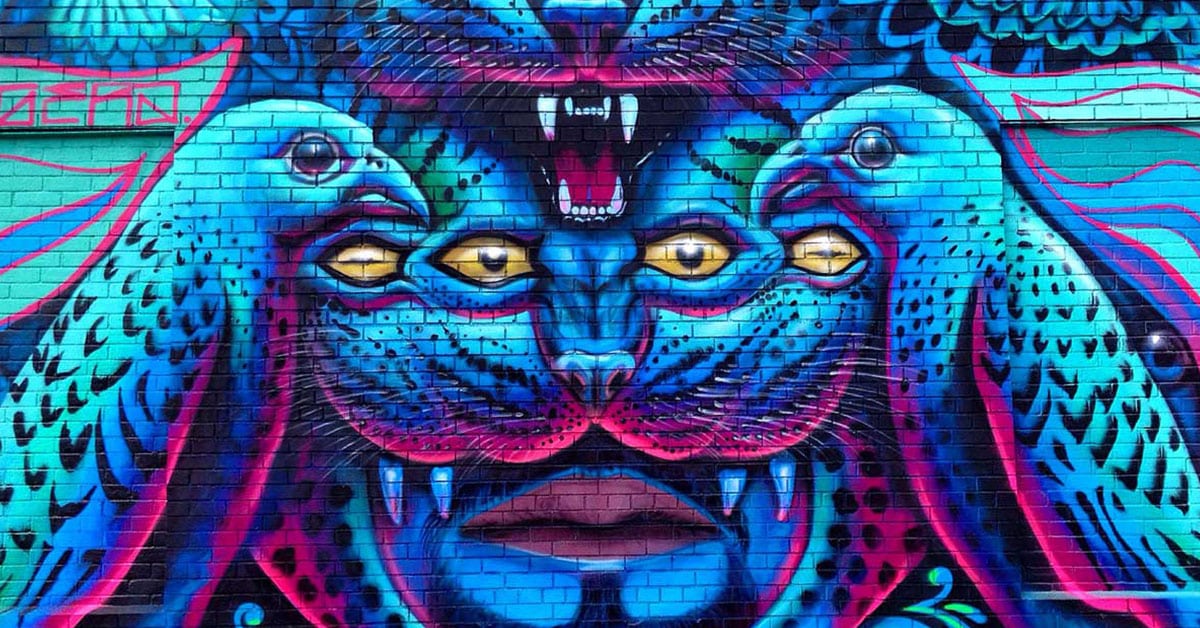Wynwood Miami – Collaboration with Gera Lozano – Feb. 2015
WERC influences and statement
He is all about duality: Mexican and American, ancient and modern, street and gallery. His work uses symbols, showing Mesoamerican mythology with the vibrant colors of graffiti. It’s also rebellion with roots, a mix of cultural identity and artistic defiance…
… an excellent example of the contradictions in street art:
Borders vs. Identity
Alvarez grew up in the shadow of the US-Mexico border, a boundary that shaped his artist statement. His work reflects the blurred lines of cultural identity. His murals embody the immigrant experience—hybrid, evolving, never fully belonging to one side or the other. He paints in a language of shifting forms: human-animal hybrids, vibrant chaos, and symbols of transformation. Like his influence Alejandro Jodorowsky, who also lived in Mexico, he explores the surreal and the spiritual, painting his way to merge them.
Ancient vs. Contemporary
Another of his defining contradictions is how he fuses the past with the present. He channels Mayan and Aztec imagery but presents it with color, movement, and the rough texture of urban life. He doesn’t simply reference history—he layers it onto the city’s walls, forcing the past to confront the present. His murals feel alive, as if the spirits of ancient civilizations are pushing through concrete.
Nature vs. Civilization
Then there’s the theme of transformation: Shapeshifters dominate his work, reflecting psychological conflict and survival in a world that demands assimilation. Graffiti is a kind of shapeshifting, moving from outlaw expression to mainstream acceptance. But where does that leave artists like WERC? Can you stay subversive when the institutions you once defied now fund your work?
Rebellion vs. Gentrification
Graffiti as rebellion vs. street art as a commodity. WERC is part of a generation that saw graffiti move from an illegal act to a celebrated art form. Keith Haring and Basquiat made that leap decades ago. Later on, Street Art became widely popular with the explosion of social media.
Now, corporations commission murals. Cities designate “legal walls,” and then there’s the gentrification problem. Murals, often meant to represent local culture, can accelerate displacement and boost real estate. The line between authenticity and co-option is thin. Street artists who once spoke for the people are now decorating neighborhoods that no longer belong to them.
WERC’s art carries meaning, but is the meaning enough? As immigration policies tighten in the US, will his work still be relevant?
